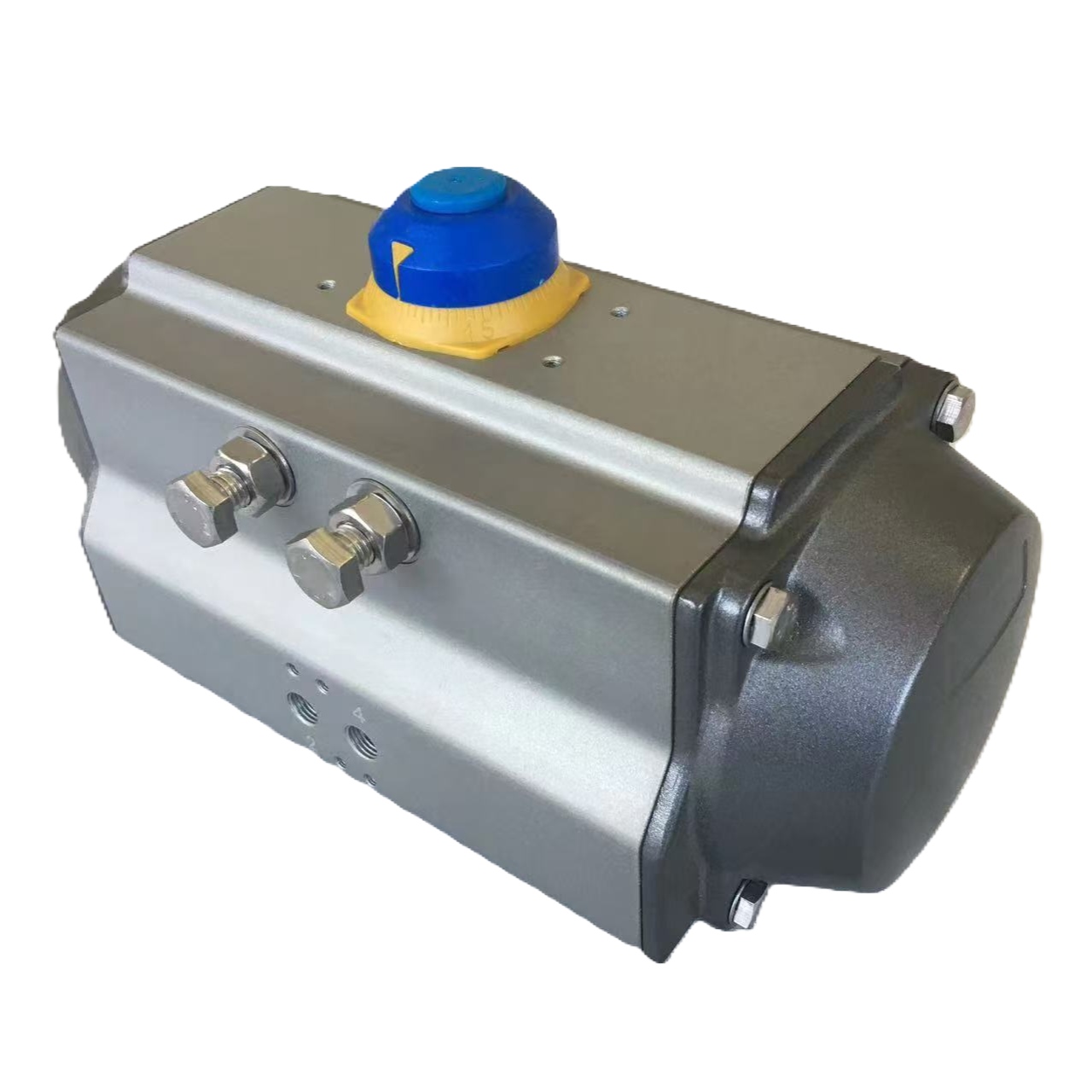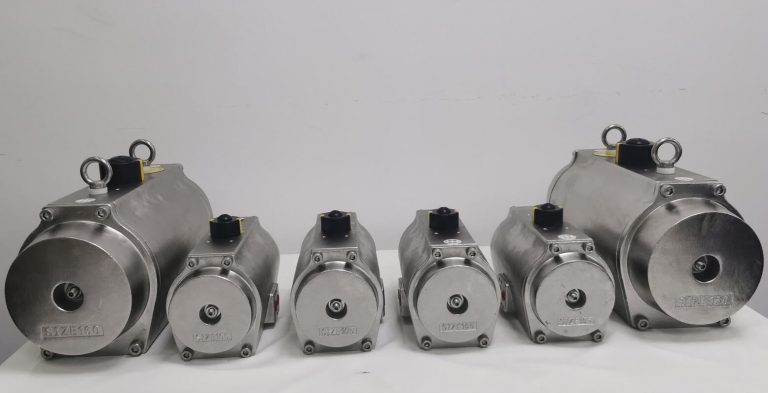Key Factors for Selecting the Right Actuator: Torque, Speed, and Environment

Picking the right actuator isn’t just another line item on your project checklist—it’s the difference between a system that hums along smoothly and one that leaves you scrambling with downtime and repair bills. In the world of valve automation, where everything from chemical plants to water treatment facilities relies on precise control, getting this wrong can cost you big. Think about it: an underpowered unit struggling against a stubborn valve, or one that’s too fast and wears out seals prematurely. We’ve all heard those stories from the shop floor. This piece dives into the core elements—torque, speed, and environment—that should guide your choice. By the end, you’ll have a clearer path to decisions that keep operations reliable and efficient.
Why Actuator Selection Sets the Tone for Your Project
Start with the basics. Actuators convert energy—pneumatic, electric, hydraulic—into mechanical motion to open, close, or throttle valves. But not all are created equal. In industries like oil and gas or manufacturing, where valves handle everything from corrosive slurries to high-pressure steam, the wrong pick can lead to failures that ripple through the entire setup.
I recall a buddy in the power sector who rushed a spec without double-checking the load; ended up with actuators that couldn’t handle the valve’s breakaway torque on a cold startup. The whole line went dark for hours. Avoid that headache by zeroing in on torque first—it’s the muscle of the operation. Then layer in speed for how quickly things need to respond, and wrap it with environmental toughness to match your site’s realities. These aren’t isolated; they interplay, like how high torque in a dusty mill might demand slower speeds to prevent overheating.
Over the years, folks in engineering have learned the hard way that skimping on upfront analysis leads to callbacks. Data from industry reports shows mismatched actuators contribute to about 20% of unplanned shutdowns in process plants. So, let’s break it down, step by step.
Torque: The Driving Force in Actuator Performance
Torque is straightforward: it’s the rotational force needed to turn your valve stem. Get this wrong, and nothing else matters—your actuator either stalls out or overworks itself into an early grave.
Calculating the Torque You Really Need
Most times, you’ll start with the valve manufacturer’s data sheet. It spits out static torque (to hold position) and dynamic torque (during full stroke). Add a safety factor—say 25-50%—to cover friction spikes or media buildup. For a quarter-turn ball valve in a 6-inch line handling viscous oil at 100 psi, you might see requirements around 200 Nm just to break loose.
But here’s where it gets real: in the field, things like stem packing wear or temperature swings can double that number overnight. Pneumatic rack-and-pinion models, for instance, deliver torque via air pressure pushing on pistons. A unit rated at 8 bar max can crank out anywhere from 8 to over 7,500 Nm, depending on size and stroke. That’s enough to muscle through tough quarter-turn ops without breaking a sweat.
- Breakaway Torque: Highest at start—factor in differential pressure across the valve.
- Running Torque: Steady during travel; usually 50-70% of breakaway.
- Seating Torque: Peaks at end; watch for over-torquing that crushes seats.
If you’re sizing for a multi-turn gate valve in wastewater, aim for models that scale torque linearly with gear ratios. Miss this, and you’re looking at stripped gears or bent shafts. One plant I know in the Midwest swapped undersized units for beefier ones; production uptime jumped 15% almost immediately.
Real-World Torque Pitfalls and Wins
Picture a fertilizer facility where ammonia vapors gum up valves. Engineers there underestimated torque by 30% because they ignored seasonal humidity buildup. Result? Frequent manual overrides and a $50K fix. On the flip side, nailing it—like selecting a double-acting pneumatic with adjustable stops—lets you fine-tune without constant tweaks. It’s those small adjustments that add up to smoother runs and fewer headaches.
Speed: Finding the Sweet Spot for Response and Wear
Speed isn’t about racing; it’s about matching the actuator’s stroke time to your process needs. Too slow, and your system lags on emergency shuts. Too fast, and you risk slamming valves, which spikes wear and noise complaints from the night shift.
What Influences Actuator Speed?
Air supply pressure, piston size, and porting design call the shots in pneumatics. A standard rack-and-pinion might clock 90-degree turns in 1-5 seconds at 6 bar, but dial it back for precision throttling. Electric actuators shine here with variable speeds via VFDs, hitting sub-second responses if wired right.
Factors to weigh:
- Process Demands: In emergency isolation, sub-2-second full stroke is gold. For modulating flow in a cooling loop, 10-20 seconds prevents hunting.
- Fail-Safe Modes: Spring-return units snap shut fast on air loss—handy for safety valves.
- Cycle Life: High-speed ops chew through seals quicker; aim for 1 million cycles minimum in high-duty spots.
I’ve chatted with ops managers who pushed max speed to shave cycle times, only to chase leaks from fatigued O-rings. Balance it: use flow control valves on ports to throttle air, extending life without sacrificing much responsiveness. In one chemical batch plant, tweaking speeds cut energy use by 12% while keeping batches on schedule.
Speed in Action: A Quick Comparison
Here’s a simple table to visualize how speed plays out across common setups. (Based on typical pneumatic rack-and-pinion performance at standard pressures.)
|
Application |
Target Stroke Time |
Torque Range (Nm) |
Pro Tip |
|
Emergency Shutoff |
<2 seconds |
100-500 |
Prioritize spring-return failsafe |
|
Flow Modulation |
5-15 seconds |
50-300 |
Add positioners for smooth ramps |
|
High-Cycle Batching |
3-8 seconds |
200-1000 |
Monitor air quality to avoid jams |
This setup helps spot mismatches early. Speeds that fit your torque envelope keep everything in harmony.
Environment: Toughening Up Against the Elements
Your site isn’t a lab—it’s a battlefield of dust, moisture, temps swinging from freezing to scorching, and chemicals that eat metal for breakfast. Environmental fit ensures your actuator doesn’t quit when you need it most.
Materials and Seals That Stand the Test
Stainless steel housings laugh off corrosion better than aluminum in salty coastal plants. Look for 304 or 316 grades, especially with polished surfaces for sanitary gigs like food processing. Seals? Viton or EPDM handle oils and acids; silicone for extremes.
IP ratings tell the story: IP67 means dust-tight and submersible for an hour—perfect for washdown zones. ATEX or IECEx certs keep sparks away in explosive atmospheres.
- Temperature Range: -20°C to +80°C standard; extended models push to -40°C or 120°C with special lubes.
- Corrosive Media: Epoxy coatings or full SS for brine or acids.
- Vibration-Heavy Spots: Beefed-up mounting pads absorb shakes from nearby pumps.
A sugar mill in Louisiana dealt with humid, sticky air that rusted out cheap units in months. Switching to hard-anodized bodies with double seals? Problem solved, with zero failures over two years. It’s those details—like grease fittings for easy re-lubes—that turn a good pick into a great one.
Navigating Harsh Conditions: Lessons from the Field
Ever wonder why offshore platforms chew through gear? Salt spray and constant motion. Here, environmental seals and low-friction designs cut maintenance by half. Data from a Gulf rig overhaul showed proper env-rated actuators dropping repair calls 40%. Don’t overlook it—test in simulated conditions if you can.
Putting It All Together: A Selection Checklist
Tie torque, speed, and environment into a workflow. Start with valve specs, layer process needs, then site audit.
- Step 1: List torque breakpoints with safety margins.
- Step 2: Match speed to cycle rates; simulate if possible.
- Step 3: Audit env factors—temp logs, chem exposure.
- Step 4: Prototype test; adjust for interactions like heat buildup slowing speeds.
This isn’t rocket science, but skipping steps invites trouble. One engineer I know uses a spreadsheet with sliders for variables—keeps the team aligned without endless meetings.
Meet Miwival: Your Go-To for Reliable Actuator Solutions

When it comes to sourcing actuators that nail torque, speed, and environmental demands, Miwival stands out as a solid partner. Founded by a crew of valve pros in Zhejiang, China, with decades under their belts, they’ve grown from a local outfit to a global player and a fresh automation-focused plant in Anhui. Their rack-and-pinion pneumatics, like the M Series, pack torque from 8.3 to 7,521 Nm at up to 8 bar, in single or double-acting setups. Housings in aluminum or stainless (304/316) handle everything from dusty mills to sanitary lines, with ISO 5211 mounts and NAMUR interfaces for seamless integration. ISO 9001 certified from raw materials to finish, they promise two-week delivery and 24/7 support. It’s that blend of engineering grit and quick turnaround that keeps projects moving.
Wrapping It Up: Make Smarter Choices for Lasting Results
Selecting the right actuator boils down to respecting torque as your power base, speed as your rhythm keeper, and environment as your durability shield. Nail these, and you’re not just buying a part—you’re investing in uptime that pays dividends. Whether it’s a quick shutoff in a volatile setup or steady throttling in a batch run, thoughtful picks like these keep things running without the drama. Take a beat to run the numbers; it’ll save you grief down the line.
Frequently Asked Questions
What are the key factors in selecting the right actuator for high-torque applications?
Torque tops the list—calculate breakaway and running needs with a buffer for surprises like media buildup. Pair it with a unit like a pneumatic rack-and-pinion that scales to 7,500 Nm without fuss, and you’ll avoid stalls in heavy-duty valve ops.
How does speed impact the overall performance when selecting the right actuator?
Speed sets the pace for your process; too quick wears parts, too slow bottlenecks flow. Aim for 1-5 second strokes in pneumatics for balanced efficiency—think emergency responses without slamming seats.
Why is environment such a big deal in selecting the right actuator?
It dictates longevity—corrosive air or wild temps can trash a mismatched unit fast. Go for stainless housings and IP67 seals to shrug off the elements, especially in spots like coastal plants where rust waits for no one.
Can torque and speed requirements conflict in actuator selection?
Sure can—high torque often means bulkier designs that slow things down. Test combos early; adjustable ports on rack-and-pinion models let you tweak without starting over.
How do environmental ratings help with selecting the right actuator for outdoor use?
Ratings like ATEX for haz areas or extended temp ranges (-40°C to 120°C) ensure it holds up against weather and vibes. It’s the difference between yearly swaps and gear that lasts a decade.





